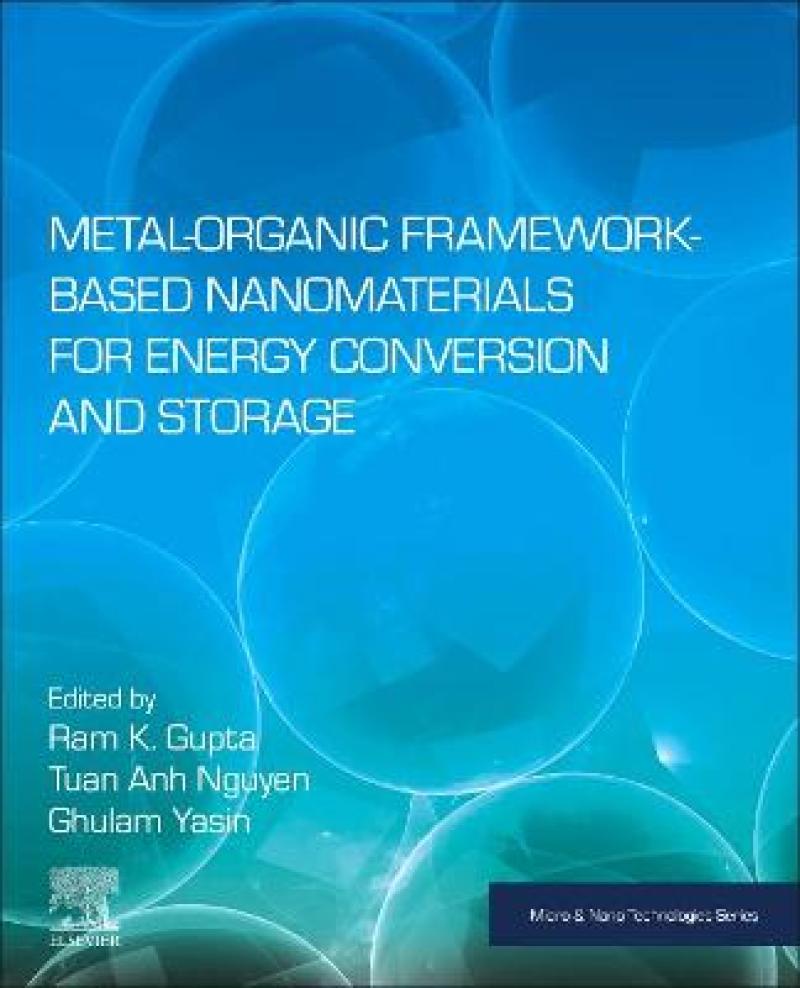Metal-Organic Framework-Based Nanomaterials for Energy Conversion and Storage addresses current challenges and covers design and fabrication approaches for nanomaterials based on metal organic frameworks for energy generation and storage technologies. The effect of synthetic diversity, functionalization, ways of improving conductivity and electronic transportation, tuning-in porosity to accommodate various types of electrolyte, and the criteria to achieve the appropriate pore size, shape and surface group of different metal sites and ligands are explored. The effect of integration of other elements, such as second metals or hetero-atomic doping in the system, to improve catalytic activity and durability, are also covered.
This is an important reference source for materials scientists, engineers and energy scientists looking to further their understanding on how metal organic framework-based nanomaterials are being used to create more efficient energy conversion and storage systems.
Les mer
Part I: Fundamentals
1. MOF-based nanostructures and nanomaterials for next-generation
energy storage: an introduction
2. Recent advances in MOFs for electrochemical energy storage
and conversion devices
3. Design and construction of MOF nanomaterials
4. Strategies to enhance the electrochemical properties of MOFs
5. Biological MOFs (bio-MOFs) for energy applications
Part II: Metal-Organic frameworks for fuel cells
6. MOF-based electrocatalysts for oxygen evolution reactions
7. Recent development in MOFs for oxygen evolution reactions
8. Effect of structural modifications on the oxygen reduction reaction properties of metal-organic framework-based catalysts
9. Metal organic framework-based nanomaterials as suitable electrocatalysts for evolution of hydrogen
Part III: Metal-organic frameworks for batteries
10. MOF nanomaterials for battery cathodes
11. MOFs and their derivatives for anode of high-performance
rechargeable batteries
12. Polyoxometalate-based metal organic frameworks (POMOFs)
for lithium-ion batteries
13. MOFs-based nanomaterials for metal-sulfur batteries
14. MOFs-based nanomaterials for metal-ion batteries
15. MOF-based nanomaterials for zinc-based battery cathodes
16. MOF-based electrolytes for battery applications
Part IV: Metal-organic frameworks for supercapacitors
17. Recent development in MOFs for supercapacitor applications
18. MOFsemetal oxides/sulfides/phoshides nanocomposites for supercapacitors
19. MOFs-carbon nanocomposites for supercapacitors
20. Flexible supercapacitors based on nanocomposites of MOFs
21. Other nanocomposites of MOFs for supercapacitors
Part V: Metal-organic frameworks for photovoltaics
22. MOFs-based dye-sensitized photovoltaics
23. Recent development in MOFs for perovskite-based solar cells
24. Integrating MOFs into dye-sensitized solar cells
25. Integrating MOFs into dye-sensitized solar cells
Part VI: Metal-organic frameworks for fuel/gas storage
26. MOFs for hydrogen storage
27. Multicriteria decision making in organic-metal frameworks for fuel storage
28. Current development in MOFs for hydrogen storage: a mechanistic investigation
29. MOFs for solar photochemistry applications
Part VII: Metal-organic franeworks for other applications
30. Metal-organic frameworks for nanogenerators
31. MOF-based photocatalysts for hydrogen generation by water splitting
32. Metal-organic framework for photocatalytic reduction of carbon dioxide
33. MOF-based advanced nanomaterials for electrocatalysis
applications
Les mer
Outlines the synthetic routes, methods and theories behind enhancing the electrochemical properties and applicants of metal-organic framework-based nanomaterials for energy applications
Describes major metal organic framework-based nanomaterials applications for fuel cell, battery, supercapacitor and photovoltaic applications
Provides information on the various nanomaterial types used for creating the most efficient energy conversion and storage systems
Assesses the major challenges of using nanotechnology to manufacture energy conversion and storage systems on an industrial scale
Les mer
Produktdetaljer
ISBN
9780323911795
Publisert
2022-05-18
Utgiver
Vendor
Elsevier - Health Sciences Division
Vekt
1650 gr
Høyde
235 mm
Bredde
191 mm
Aldersnivå
P, 06
Språk
Product language
Engelsk
Format
Product format
Heftet
Antall sider
814

